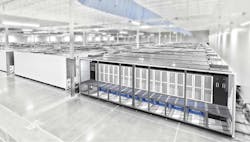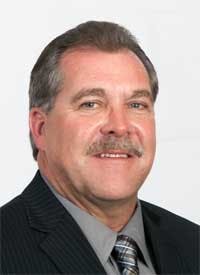Today we continue our Data Center Executive Roundtable, a quarterly feature showcasing the insights of thought leaders on the state of the data center industry, and where it is headed. In today’s discussion, our panel of experienced data center executives – Jakob Carnemark of Aligned Energy, Robert McClary of FORTRUST, Rick Crutchley of IO, Dan Papes of Digital Realty and Brian Kortendick of BASELAYER – looks at the the market for modular data center products, and how emerging technologies could impact demand for these products.
The conversation is moderated by Rich Miller, the founder and editor of Data Center Frontier.
Data Center Frontier: What’s the state of modular data center solutions in 2017? What do you see ahead for these solutions?
Robert McClary, FORTRUST
Robert McClary: Over the past four or five years I’ve seen the numbers of actual modular solutions grow in volume, so there are more choices when it comes to modular approaches to data center design and construction. I see those continuing to grow. I think what’s made the adoption of these types of solutions slower over the past few years than it should have been is just general contractors and engineering firms becoming familiar with the technologies and being able to consult to an owner/operator on the advantages and significant cost savings of some of these solutions.
To get a little edgy with this, quite frankly, the reason for that is that they lose money. When you have an approach that may cost you margin, you’re not motivated to provide that to an owner. When you can keep doing the same thing that you’ve been doing, it’s easier. Long story short: when people have to take a financial haircut, they don’t necessarily run to the barbershop. I think the adoption rate has been slowed because of that.
What do I see ahead? They will continue to become more plentiful as owners become more educated and demand capital efficiencies in data center design and construction. I think it’s just an evolution in the data center industry, but because it has a monetary loss to contractors and a cost savings to owners associated with it, sadly it’s going to be slow to evolve.
The other thing we want to talk about with this is the containment of the IT environment. Why we’ve been fighting with all kinds of different solutions over the years about how to contain the hot aisle and the cold aisle, and how to separate the two in a raised floor environment. We’re basically putting a band aid on a bad approach, instead of fixing the root cause of why containment is so lousy in a raised floor environment.
We need to figure out different ways to deliver the IT environment in a data center. Why not encapsulate the IT environment and have the containment built in as part of the infrastructure instead of building out infrastructure that’s basically open white space and then trying to contain the hot aisle and the cold aisle after the fact? Build it into the design. Start designing the data center from the IT environment back through the MEP instead of the reverse.
BRIAN KORTENDICK of BASELAYER
Brian Kortendick: Modular data center solutions will continue to make gains in the market in 2017. Early market feedback is that greenfield and expansion builds are now required to evaluate modular designs with emphasis on financial and operational ROI analysis when compared to traditions builds. Our market research also indicates that strategic edge and on-premises deployments will increase as companies look for more cost-effective methods to deploy 1-2MW deployments.
We anticipate that many industry verticals including telecommunications, manufacturing, content distribution (CDN), utilities, universities, and healthcare will look to modular data centers as an extension of their IT growth strategy. Given the breath of these various industries, we anticipate demand for “turn-key” modular solutions that can be readily deployed and operated by IT or construction groups. Thus, partnerships in these areas will be worth tracking as the year progresses.[clickToTweet tweet=”Brian Kortendick: Modular data center solutions will continue to make gains in the market in 2017.” quote=”Brian Kortendick: Modular data center solutions will continue to make gains in the market in 2017.”]
Finally, we are seeing strong demand from colocation service providers looking for modular power infrastructure to address power additions to existing facilities. These service providers value rapid and flexible power expansion and are just starting to explore modular power infrastructure as the preferred path forward.
RICK CRUTCHLEY of IO.
Rick Crutchley: The next step in modular data center solutions is what is referred to as Edge computing- smaller data centers placed closer to end user for improved availability and latency.
According to Markets and Markets, the worldwide market of modular data centers will most likely grow from $8.37 billion currently to $40.41 billion by 2018. This is tremendous growth, and that is where we see the Edge computing coming into play to help with that growth.
DAN PAPES of Digital Realty
Dan Papes: The need for agility has led to a massive increase in interest of modular and agile data center solutions. The modular data center market alone was estimated at $10.34 billion in 2016 and is expected to top $38 billion by 2021.
A common requirement we hear from customers and potential customers is the need for more agile, scalable data center solutions, and how a combination of cloud and colocation can lead to greater agility. Digital Realty is delivering modular and interconnected building blocks designed to enable these strategies and connect our customers to the relevant networks, services, customers and partners.
JAKOB CARNEMARK, Aligned Energy
Jakob Carnemark: Modular solutions continue to evolve. We seek to deliver the data center as a utility. We believe the right goal of modularity is to deliver the lowest cost of a kWh of compute power on a utilized basis on demand. Many current approaches to modularity actually dramatically increase stranded capacity and thus cost. The key here is the result, not the approach.
RECAP: See our Executive Roundtable overview for links to all four stories and the Executive Insights for each participant.
Keep pace with the fact-moving world of data centers and cloud computing by following us on Twitter and Facebook, connecting with me on LinkedIn, and signing up for our weekly newspaper using the form below:
About the Author





